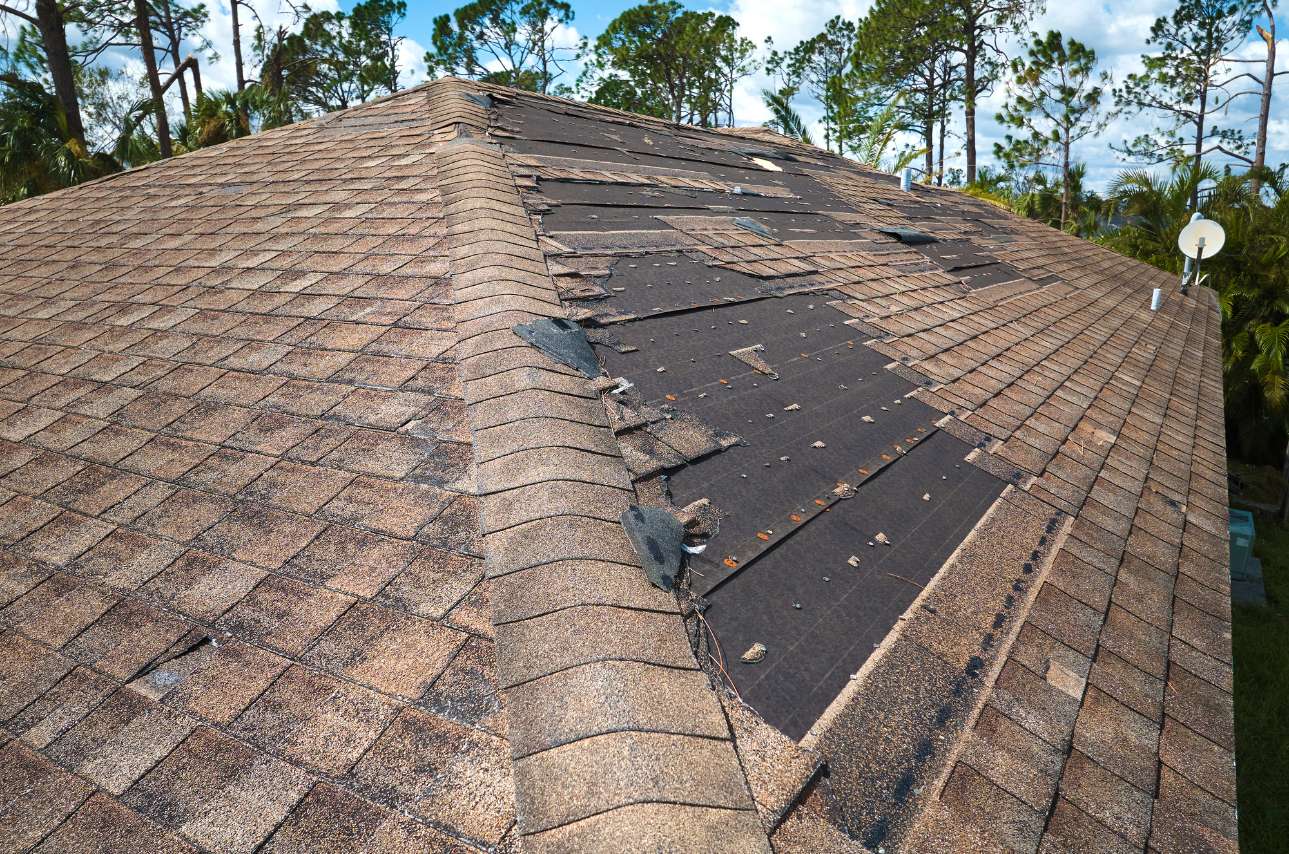The browser you are using is not supported. Please consider using a modern browser.

Stormy Weather Checklist: 10 Ways to Prepare for Storm Damage.

Storms can unleash a devastating impact on properties, leaving behind a trail of destruction. With heavy rainfall, powerful winds, lightning strikes, and flooding, buildings and infrastructure are at high risk of significant damage. In fact, between 2017 and 2021, weather-related property damage skyrocketed to a staggering $121.4 billion, a number projected to rise as extreme weather events become more frequent across the nation.
Given the increasing threat of storms, a comprehensive stormy weather checklist is crucial. Here are ten ways to prepare for storm damage to safeguard your property and mitigate potential storm damage.
1. Inspect and Maintain Your Roof
Your roof is your first line of defense against storms, so inspect it regularly and keep it well-maintained. Check for loose or missing shingles, damaged flashing, and clogged gutters. Repair any issues promptly to prevent water from leaking into your building during heavy rainfall.
2. Trim Trees and Shrubs
Overhanging branches and trees near your property can become hazardous during storms. Strong winds can break branches or even uproot entire trees, causing damage to your building. Regularly trim trees and shrubs near your property to minimize the risk of storm-related damage.
3. Secure Outdoor Items
Outdoor furniture, equipment, and debris can become projectiles during storms, causing damage to your property and neighboring buildings. Secure or store outdoor items indoors before a storm hits to prevent them from causing harm during high winds.
4. Reinforce Doors and Windows
Doors and windows are vulnerable areas during storms. Install storm shutters, reinforce doors with heavy-duty bolts, and use impact-resistant glass to protect against flying debris. Consider installing hurricane-rated doors and windows for added protection.
Recommended Reading: 10 Essential Storm Safety Tips for Door & Window Protection
5. Check and Test Your Sump Pump
Flooding is common during storms, especially in low-lying areas or properties with basements. Make sure your sump pump is in good working condition, and test it regularly to ensure it can handle heavy rainfall and prevent basement flooding.
6. Create an Emergency Kit
As part of your stormy weather checklist, prepare an emergency kit that includes flashlights, batteries, first aid supplies, non-perishable food, water, and a portable phone charger. Keep the equipment in a readily accessible place in case of power outages or evacuation.
7. Reinforce Your Building’s Structure
Ensuring the structural integrity of your building is vital in storm preparedness. Have your building inspected by a qualified professional to identify and address any weak points, such as cracks in the foundation, loose or deteriorating building materials, or outdated construction methods. Strengthening your building’s structure can significantly reduce the risk of storm damage and improve its ability to withstand high winds and heavy rainfall.
8. Review Your Insurance Coverage
Review your insurance policy to ensure it covers storm-related damage. Consider adding additional coverage for floods, windstorms, or other weather-related risks that may not be included in your standard policy. Keep a copy of your insurance policy and important contact information in your emergency kit.
9. Have an Evacuation Plan
If you live in an area prone to severe storms, it’s crucial to have an evacuation plan in place. Familiarize yourself, your family, or your employees with evacuation routes, emergency shelters, and designated meeting points. Review the plan regularly and update it as needed.
Recommended reading: Your Comprehensive Guide to Creating a Family Emergency Plan
10. Stay Informed
Stay updated with the latest weather forecasts and warnings from local authorities. Follow news and weather updates through reliable sources like the National Weather Service or your local emergency management agency. Be prepared to take action based on the information received.
By following these ten ways to prepare for storm damage, you can minimize the risks and protect your property. Being proactive and protecting your building before a storm hits can save you time, money, and stress in the long run. Remember always to prioritize safety and stay informed about weather conditions in your area. Stay safe – stay prepared!
Is your building or home suffering from storm damage?
At High Mark Construction, we understand the importance of protecting and restoring your property from storm damage. As a specialized residential and commercial general contractor, we provide top-notch exterior renovations and restoration services, including roofing, siding, gutters, and windows.
Our experienced team is skilled in their craft, customer service, and expectation management, ensuring a streamlined process that gives you peace of mind and solid solutions. We strive to put more ease into general contracting with greater trust and accessibility, making your renovation journey hassle-free. In addition, we are licensed in multiple Mid-Atlantic states, allowing us to work directly with your insurance company in case of storm damage, ensuring a seamless experience from start to finish.
We are committed to innovation in what we do and who we are, constantly evolving to serve our clients better and exceed their expectations. When it comes to stormy weather, being prepared is crucial— trust High Mark Construction to be your partner in recovering from storm damage. Contact us today to experience the High Mark difference.